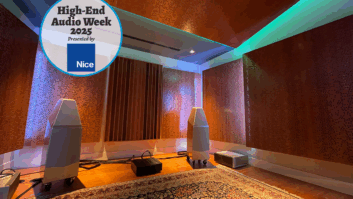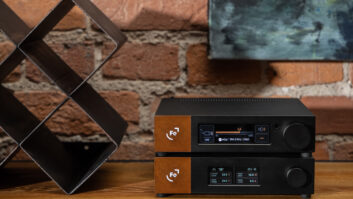Are you a PC or a Mac? Apple or Android? These are key questions that I ask my clients when deciphering the expectations they have for their integrated home systems. It helps me find out what makes them tick, so that I can give them a system they can understand.
iPad and iPhone interfaces have become nearly ubiquitous in our society, and “Apple” people (like me) can hardly function without them. As a result, I want all confusion taken out of my system. I want to be able to look at an icon on my keypad and know that it will turn the Xbox on without even having to read it.
To maintain comfortability, using displays that incorporate similar branded icons makes for an easier transition for the client who purchased an integrated control system for their home. If you program Sirius Radio into a client’s keypad but do not have the option to load the Sirius Radio icon (after they are so used to looking for this icon on their iPhone), they will be lost on what to select. This client is looking for the whole package—there’s nothing this system can’t do.
My Apple clients tend to go with higher end systems that come at a higher price point to incorporate all of their expectations. On the other hand, PC people (like my wife) are looking for structure and ease of operation. She has an iPhone but somehow can never work it. We have four Macs at home, yet she will still only use my old Toshiba. When it comes to our remotes, she doesn’t care about the icon; she prefers descriptive wording and wants to be able to follow the process from beginning to end when operating the system. Based on knowing that she’s a “PC,” I understand that I won’t need a huge budget to meet her needs, because a basic system will get the job done. (Unlike a client like me who wants all the bells and whistles and to be able to use my iPhone to control absolutely everything.)
My integration company has been looking into a lot of control companies lately, and what we realized is that many of these manufacturers don’t have the necessary icons needed for our Apple client user interfaces. But for our high-end clients, we HAVE to be able to design an interface that reflects their expectations.
Fortunately, there are a lot of independent programmers that make custom interfaces for control systems from companies like Savant, URC, AMX, Crestron, and others. If you choose a product line that does not offer certain brand logos, you can take it one step further by partnering with one of these programming firms to customize a client’s system with more familiar icons and interface features. Not only do these companies allow you to integrate the logos you need, but they also enable you to customize the entire GUI to reflect your client’s personality. For example, if I have a client who loves sports, I might want to tailor their display using sports icons or backgrounds. No one wants to be the “me too” guy, and taking advantage of this opportunity not only allows your client to be a step above the rest, but it helps your work stand out in a crowd. As “custom” integrators, this is another way that we can differentiate ourselves from other integrators and big-box stores.
The perfect installation meets and exceeds all of your client’s needs whether they are an “Apple” like me, or a “PC” like my wife. I like to keep up with the trends, ask the right questions, and not be afraid to think outside the box. After all, if I don’t think of it, then someone else will. By then it will be too late.
Todd Anthony Puma is president of The Source Home Theater Installation in New York City.







